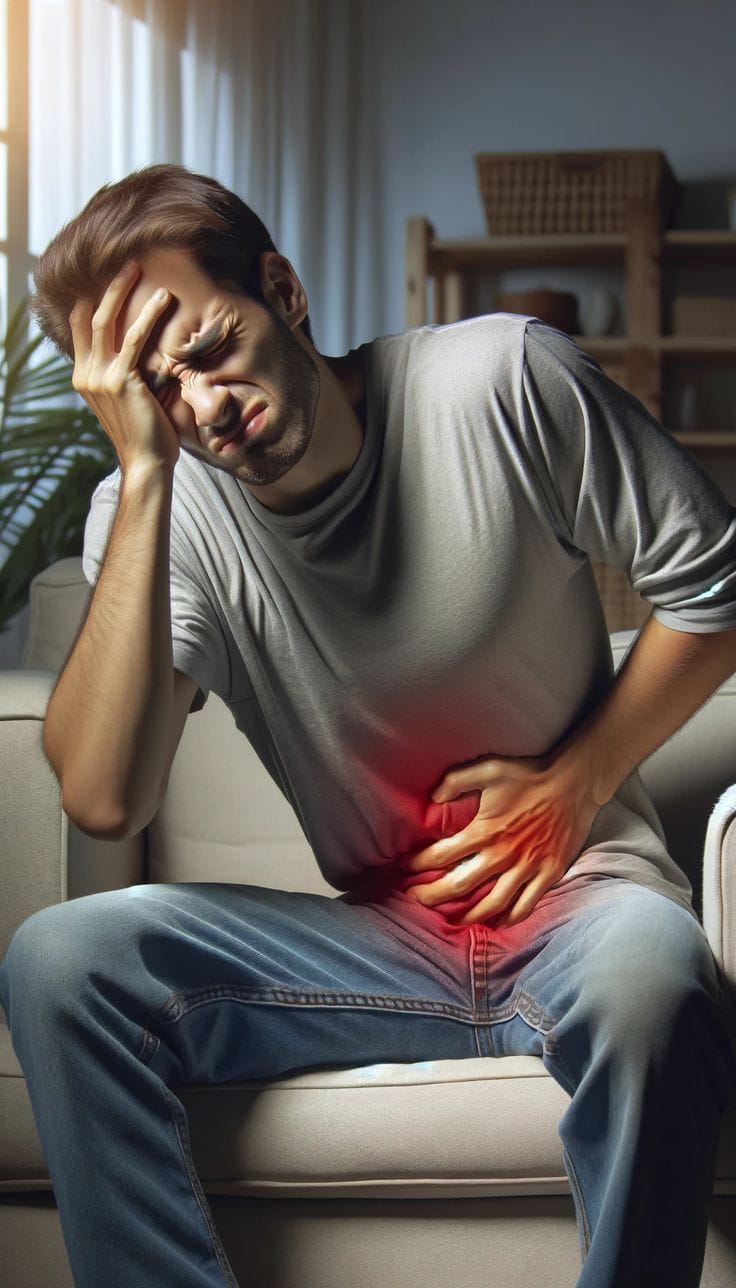Sperm cramps, often referred to as testicular cramps or spermatic cord pain, can be an uncomfortable and confusing experience for many men. While not as commonly discussed as other health issues, understanding the symptoms and potential causes can help demystify the condition and guide individuals toward effective management strategies. In this article, we'll explore the symptoms of sperm cramps, their potential causes, and what you can do if you experience them.
What Are Sperm Cramps?
Sperm cramps are typically characterized by discomfort or pain during or after ejaculation. These cramps can vary in intensity and duration, affecting individuals differently. While many men may experience mild discomfort occasionally, others may encounter more severe symptoms that can interfere with sexual activity or cause distress.
Common Symptoms of Sperm Cramps
1. Pelvic Pain
The hallmark of sperm cramps is often a sharp or dull pain in the pelvic region, particularly during ejaculation. This pain can feel localized or may radiate to nearby areas, such as the lower abdomen or groin.
2. Post-Ejaculatory Pain
After ejaculation, some individuals experience lingering discomfort or cramps. This post-ejaculatory pain can range from mild to severe and may last from a few minutes to several hours.
3. Discomfort During Intercourse
Many people report increased discomfort during sexual activity, particularly as ejaculation approaches. This can lead to anxiety about sexual performance and impact overall enjoyment.
4. Changes in Urination
In some cases, sperm cramps may be accompanied by changes in urination. This could manifest as a burning sensation, increased frequency, or difficulty starting urination, potentially indicating an underlying infection.
5. Ejaculatory Changes
Although less common, some individuals notice changes in semen consistency or volume alongside cramping. This could be related to various factors, including hydration levels or reproductive health.
6. General Discomfort
Some may experience generalized discomfort in the pelvic region, including a feeling of tightness or pressure, which can contribute to anxiety and frustration.
Possible Causes of Sperm Cramps
Understanding what might be causing sperm cramps can be vital for addressing the issue. Here are some potential causes:
1. Prostatitis
Inflammation of the prostate gland, known as prostatitis, can lead to discomfort during ejaculation. This condition may also cause pain during urination and can result from bacterial infection or other factors.
2. Epididymitis
This is an inflammation of the epididymis, the tube at the back of the testicle that stores and carries sperm. Epididymitis can cause swelling and pain, particularly during ejaculation.
3. Pelvic Floor Dysfunction
Muscle tension or dysfunction in the pelvic floor can contribute to cramping sensations. Stress, anxiety, or physical trauma may lead to this condition.
4. Infections
Sexually transmitted infections (STIs) or other infections can cause inflammation and pain during ejaculation. It's crucial to seek medical attention if an STI is suspected.
5. Dehydration or Nutritional Deficiencies
Dehydration and lack of certain nutrients can lead to muscle cramps throughout the body, including the pelvic region. Ensuring adequate hydration and nutrition can help alleviate symptoms.
When to Seek Medical Help
While occasional sperm cramps may not warrant immediate concern, certain circumstances should prompt a visit to a healthcare provider:
- Severe or Persistent Pain: If the pain is intense or does not improve over time, it’s essential to get it evaluated.
- Accompanying Symptoms: If you experience additional symptoms like fever, swelling in the testicular area, blood in semen, or significant changes in urination, seek medical attention promptly.
- Recurring Issues: Regular occurrences of sperm cramps warrant a discussion with a healthcare provider to rule out any underlying conditions.
Management and Treatment
1. Hydration and Nutrition
Ensuring adequate hydration and maintaining a balanced diet rich in essential nutrients can help reduce the frequency and intensity of cramps. Consider increasing your intake of fruits, vegetables, and electrolytes.
2. Stress Management Techniques
Practicing relaxation techniques such as yoga, meditation, or deep breathing exercises can help alleviate stress and reduce pelvic tension.
3. Pelvic Floor Exercises
Strengthening pelvic floor muscles through exercises like Kegels may improve symptoms. These exercises involve contracting and relaxing the pelvic muscles and can help enhance control over ejaculation.
4. Consulting a Healthcare Professional
If cramps persist or worsen, consulting a urologist or healthcare provider is crucial. They can conduct tests to determine underlying causes and recommend appropriate treatment options.
Conclusion
Sperm cramps can be uncomfortable and concerning, but understanding their symptoms and potential causes can help demystify the experience. While many cases are benign and manageable, it's crucial to be aware of when to seek medical advice. Prioritizing open communication with a healthcare provider will ensure you receive the appropriate guidance and treatment if necessary. Remember, you’re not alone in this, and taking care of your reproductive health is important!

